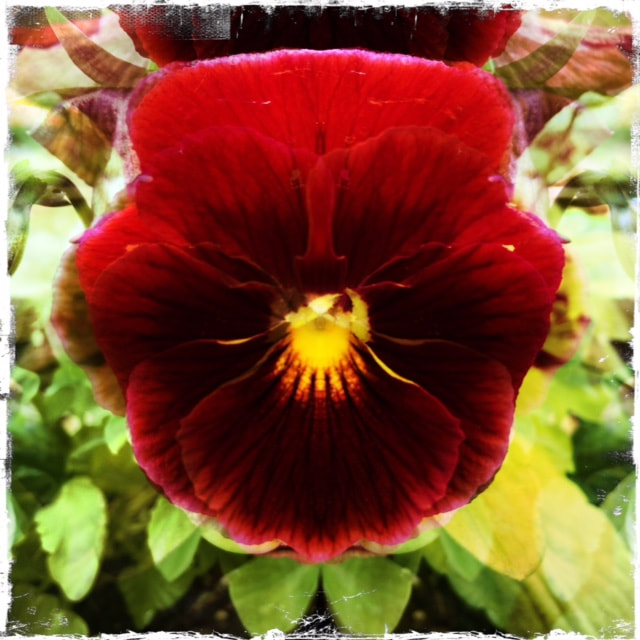ASSAY: A JOURNAL OF NONFICTION STUDIES
8.2
8.2
|
When Joan Didion died the day before Christmas Eve last year, I had just turned in my grades after another rough pandemic semester teaching writing. Despite the many obstacles and distractions, the upper-level creative nonfiction class was particularly successful. As I read student portfolios of memoir pieces and essays that worked from writing models, I was reminded again how Joan Didion had provided models for the forms in which we were writing, which I continue to find to be miraculous.
I say miraculous because my classes, by and large, are composed of first generation students, many still firmly inside their family’s belief systems. These are students who will go on to work as elementary and high school teachers, as New York State employees, and as nonprofit administrators. These are not students who, like Didion, worked at Vogue, lived in a doorman building in the East 70s, or posed for Time magazine photographer in front of a Corvette in a long-sleeve t-shirt dress. Since her passing, there have been plenty of essays and Twitter threads that cover Didion’s so-called privilege, and that is a needed reassessment. But what is miraculous about great writing is its alterity, its ability to translate across time, across demographics. In our upper-level creative nonfiction classes, one of the culminating assignments is something I call “Make Your Own ‘White Album’.” There are lots of moving parts to this assignment, and it covers a good chunk of any given semester. It involves the class reading Didion’s “The White Album,” watching a YouTube playlist to deepen our sense of the many cultural references in the essay, and writing our own version of “The White Album” using our own lives. The results are almost always successful and often amazing. The assignment was included in the Now Write! Nonfiction, published in 2009 if anyone wants to check it out. Another Didion essay I bring into just about every class is “Goodbye To All That,” Didion’s 1967 essay about leaving New York City. I don’t assign per se; instead, I put it up on the projector and I tell the story of how, when I was writing my own essay about leaving New York City, I obsessed over this Didion essay for years. I wanted to know what made it successful, how it seemed to be universal and specific at the same time. So I broke it down, sentence by sentence, often diagramming the more important sentences on the board. It’s all a bit of professor theater, of course. The larger point is to model the kind of slow reading and re-reading that gets lost in classes where hundreds of pages need to be covered each week. What I show on the projector isn’t just the essay. It’s the essay, pasted into Word and color-coded according to writer Aldous Huxley’s idea of the essay’s “three-poled frame of reference,” which he describes in the preface to his Collected Essays, published in 1960. I first encountered this idea in The Essay: Theory and Pedagogy for an Active Form, Paul Heilker’s 1996 study published by the National Council of Teachers of English. Sitting in a chapter on “Twentieth-Century Theories of the Essay” beside heady sections on Adorno and Lukács is a gloss over a rather straightforward, and eminently teachable, idea about essays. Here’s the Huxley passage: Essays belong to a literary species whose extreme variability can be studied most effectively within a three-poled frame of reference. There is the pole of the personal and the autobiographical; there is the pole of the objective, the factual, the concrete-particular; and there is the pole of the abstract-universal. Most essayists are at home and at their best in the neighborhood of only one of the essay’s three poles, or at the most only in the neighborhood of two of them. For anyone in need of a clear-eyed theory of what makes essays tick, I recommend the entire preface. Huxley’s description of “predominantly personal essayists” is especially useful when trying to distinguish among essay, memoir, personal essay, which is a question that comes up quite often in a survey of different nonfiction modes. That Huxley includes the “predominantly objective essayists who do not speak directly of themselves, but turn their attention outward to some literary or scientific or political theme” is also useful for students who wonder just what it is they are writing in many of their “non-creative” writing classes. Huxley says that “[t]heir art consists in setting forth, passing judgment upon, and drawing general conclusions from, the relevant data.” Including the objective essayist is also especially helpful for any creative writing instructor who stresses the need for outer data, for research to be placed into the mix—something many creative writing students dread or dismiss or both. When Huxley covers the “personal-autobiographical,” we talk about how in so much creative nonfiction we dig into our personal histories and material and craft them into true stories. And then we get to what to my mind is the hardest part to teach, the “abstract-universal.” “And how splendid, how truly oracular are the utterances of the great generalizers!” Huxley writes of the essays who lean abstract-universal, quoting Francis Bacon, Ralph Walso Emerson, Baltasar Gracian, and others.
It’s in an upper-lever creative nonfiction course where we might talk about Vivian Gornick’s ideas of situation and story, and how it’s important to spell out our own wisdom, and how sometimes we will teach readers why a certain personal story might be useful or enriching. We can do that not so much by hand-holding or “telling,” by just speaking our wisdom, our truths. In a composition course or a 200-level writing class, it’s more about modeling ways of deep reading, or reading as writers, as opposed to as scholars or a casual reader. I also confess to my students that I am a total triangle freak. I have a slide show called “Triangles, Triangles Triangles” that includes rhetoric’s “ethos/logos/pathos,” the composition studies triad of “say/mean/matter” as well as Goldilocks and the Three Bears and comedy writing’s trinity of set-up- build-up, and punchline. Student reactions range from “wow, that’s very intense” to “I’m so glad to see someone else so obsessive over something they love” (both are actual quotes from a recent semester’s online discussion board). What I found about “Goodbye to All That” was that Didion’s essay is that rare essay specimen that includes all three of Huxley’s poles—the personal-autobiographical; the objective, factual, and concrete-particular; and the abstract-universal. And I discovered this, as many obsessive nerds do, with our tools of the trade: colored highlighter markers. Re-typing Didion's essay into Word, I then set up a color-code for Huxley’s poles: yellow for “personal and autobiographical”; purple for “objective, factual, concrete-particular”; and green for “abstract-universal.” What I learned runs counter to a lot of what we are taught in the classroom about what makes an effective paragraph. Begin right off the bat with something completely general, as Didion does, with “It is easy to see the beginnings of things, and hard to see the ends”? Sprinkle factual nuggets and nest them mid-paragraph, like veins of an arm, as Didion does? And what is it about Didion’s writing that leans heavily personal, in my reading yellowed with autobiographical details, and yet I come out of it feeling like I have learned something about being human and leaving a place like New York? It’s the balancing act on those three poles that makes this essay work. What I draw from this essay isn’t that Didion lived a completely glamorous lifestyle in New York and went to fabulous parties—although, to be honest, that does holds my interest. It’s that Didion has learned something about life and New York, “a city only for the very young.” Another part of what makes the abstract-universal passages pop is that Didion lets us in on how she is writing it, what Chris Anderson calls the “rhetoric of process.” “Part of what I want to tell you,” Didion writes, and then goes on to compare her time in the city in cinematic terms. At another point she asks “[W]as anyone ever so young? I am here to say someone was.” This idea, of letting the reader in on the labor of getting the writing done, resonates with students, no matter the level. Whether it’s making an argument or writing about our own lives, bread-crumbing our struggle as we go along is not only an honest gesture to the reader—it’s a way of having them see your point of view or understanding their story.
When students look at the color-coded Didion essay, what we notice is that the abstract-universal sections aren’t placed where one might expect in, say, a five-paragraph essay (intro and conclusion) or in a traditional academic paragraph (the summative final sentence). Didion might lead off a paragraph with an abstract sentence, or nest it inside a paragraph. A student pointed out that one abstract-universal section that sits inside a parenthetical, one that begins “It strikes me now that the people I knew in New York all had curious and self-defeating sidelines.” She called it a “hidden truth bomb.” I really liked that. What comes up after these discussions, besides a show-and-tell about their instructor’s obsessiveness, is that students can see if they can work with all three poles of reference—personal, objective, and universal—in their drafts. The more personal one student’s piece, for example, the less inclined a writer might be to make universal claims, which is exactly what might make a draft resonate. Introducing Huxley’s idea of the three-poled frame of reference, and including my own challenges in figuring out how to do that, makes for a fruitful mini-lecture and discussion. Of course, there is also the magic of the words Didion wrote, her style, those sentences, ah those sentences, which can’t be color-coded. (I started diagramming her sentences, too, which is for another time.) Long story short: she was a master, I tried to etherize her writing on a table and color-code it, and I failed to solve the mystery of why Didion’s essay was so great. But I did get to model for my students the kind of work that might go into reading something you really love. |
|
Daniel Nester is a poet, nonfiction writer, teacher, and editor. His most recent book is Harsh Realm: My 1990s, a collection of poems. His previous books include Shader, a memoir; How to Be Inappropriate, a collection of humorous nonfiction; and The Incredible Sestina Anthology, which he edited; and the poetry collection The History of My World Tonight. His first two books, God Save My Queen: A Tribute and God Save My Queen II: The Show Must Go On, are hybrid collections on his obsession with the rock band Queen. His poetry has appeared in The American Poetry Review, Bennington Review, Barrelhouse, The Hopkins Review, Word For/Word, Court Green, Love’s Executive Order, and other publications. His nonfiction has been published in New York Times, BuzzFeed, Electric Literature, The Millions, The Atlantic, Bookforum, The Rumpus, the Poetry Foundation website, and others, and has been anthologized in Best American Poetry, Now Write! Nonfiction, The Best Creative Nonfiction, Lost and Found: Stories from New York, and Third Rail: The Poetry of Rock and Roll. A former sestinas editor of McSweeney’s Internet Tendency, he edits Pine Hills Review, the online literary journal of The College of Saint Rose, where he is also professor of English.
|

